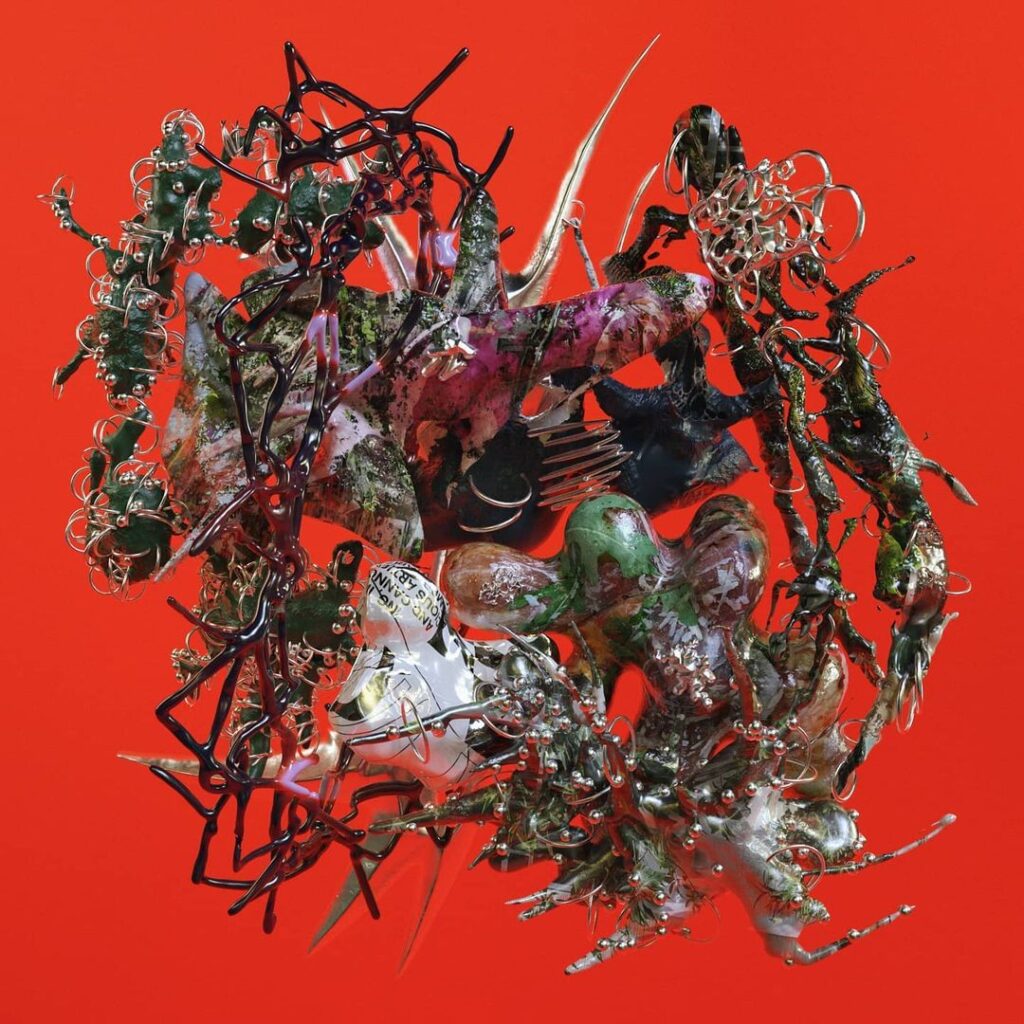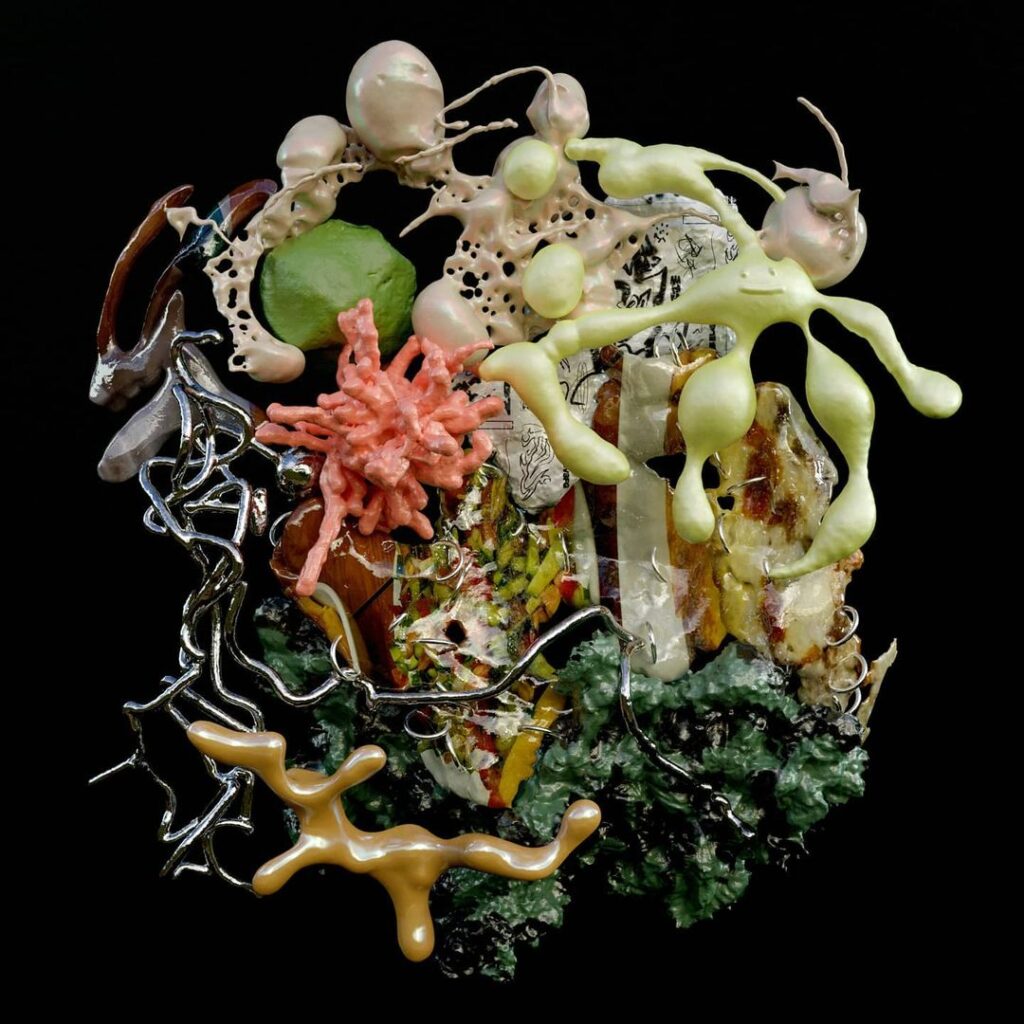Blue Wash Interviews is where we introduce you to our artists and their vision. Why do they do what they do? What inspires them? What does the future of art look like, according to them?

Kitasavi is a digital artist represented on the Blue Wash platform. Today, he tells us about his past, expands on the present and takes a glance at the future.
Tell us a bit about yourself!
K: I’m an artist who started out as a graphic designer. I’ve had many graphic design jobs. First, I worked as an in-house designer for a big cinema chain. But the work was too monotonous and boring for me, so I moved on and got a job at a design studio, where I stayed for two years. It was a nice job, but eventually I started feeling like I hit the ceiling there. So I left and started working for an international creative agency. This was even worse, and I only lasted 3 months. I did not like that job at all. I had to design sausage packages with cutout Photobank pictures.
Imagine a sausage pack with your artworks on the label. That would sell fast!
K: Yes, that would have been cool! But I could not embrace my creativity there, I was just making designs according to protocol. So, I became a freelance designer instead. Surprisingly, I found clients pretty quickly and started working on branding for places from all over the world.
Then I realized I wanted to develop my Instagram. But it was hard to do because I had clients from all over the world and couldn’t go and take photos of the works I did for them. So I just started posting fragments I liked here and there. And it turned out people enjoyed them!
So, you haven’t been posting art on Instagram for very long?
K: I’ve only been doing it for a year or so. Initially, I just wanted to share what I created. I didn’t count on monetizing it. But then I gained followers, and orders started coming in. People wanted something in my signature style.
How would you describe your works? Are they abstract or figurative?
K: You can see characters in my works, but I don’t always create them on purpose. Sometimes they are just born naturally as elements of my art. I create shapes, and they just happen to transform into characters. I just go with the flow. I would say my works are somewhere in between abstract and figurative art.
One of your artworks, Ballet, has become the most liked piece on our Instagram. Can you tell us more about it?
K: To be honest, I can’t explain its success. Maybe it’s because Ballet is more elegant and sophisticated than the rest of my works. But it was not my intention to make it that way. Beauty is never my goal. My aesthetic does not lie in beauty, it’s more about energy that can captivate.
If you look close enough, you can see a character in Ballet. She’s a ballerina, and she also appeared naturally while I was creating this piece. Can you find her?
Ohhh, we can see her now!

She is in motion here, almost looking like she’s jumping. It reminded me of dancing, so I started thinking of her as a ballerina.
She looks very fragile. It’s like she’s made from glass.
K: Yes, she looks like a Christmas ornament. Some people even asked me if Ballet is 3D or a photograph. I think it looks very real because of the texture.
Where do you get inspiration from?
K: My main inspiration source is my wife. We do everything together. She’s sitting next to me right now while I’m being interviewed. She listens to all my ideas and thoughts. She was the one who inspired me to make art. I always doubt myself, but she encourages me to try new things and move forward.
I like to find inspiration in all my surroundings. I build a life around me that feels safe but fills me with creative energy at the same time. For example, good food really helps me feel creative. A nice dinner always gives me motivation to create something new the very next day.

Do you have any food-related artworks?
K: I like to hide pieces of my life in art. So, food appears in my works quite often. If you look close enough, you can find photo fragments in my art, although they are not easy to notice. In my work Soup, you can see a photo of food I took myself. I do this to add texture to my works, but also as a way to make them more personal.

Sometimes I even hide messages for my audience to find in art. They’re usually kind, but can get a little aggressive if I’m feeling down.
Have you ever tried presenting your works in different mediums, like holograms, for example?
K: Not yet. I’m currently travelling, so I will be keeping things digital for the next few months. When I come back to Moscow, I will think about expanding my formats – like printing some of my works and making collages. I’ll also consider animation. I would like to create full audiovisual pieces, dynamic enough to showcase at installations.
What is the future of digital art?
K: I’m not an expert, but I’ve been hearing a lot about crypto art recently. I like the idea of it. It gives artists the opportunity to monetize more of their artworks, and I think it’s great. As of right now, it’s not clear how to connect NFTs to the traditional art format – for instance, how to integrate crypto art into the exhibition scene. And there is also an issue of accessibility – some might find NFTs too complicated to purchase and interact with. If we can find a way to make crypto art simpler, it will become the future of digital art.
This interview was taken in February. Since then, Kitasavi has already sold several artworks on Foundation, a popular NFT platform for digital artists.


 News
News